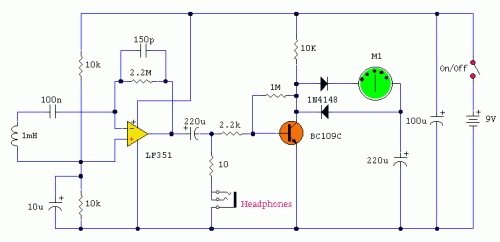Electronic projects |
|
|
|
you are here: home page :: projects :: Tools & measurement :: measuring devices :: Electromagnetic Field Probe with Meter Output
Electromagnetic Field Probe with Meter OutputNotes: Probe Construction:
Meter Circuit: Testing: In Use: e-mail: web site: http://www.zen22142.zen.co.uk |
 Audio (49) Audio (49) Power & high voltage (43) Power & high voltage (43) Radio (23) Radio (23) Light & LED (31) Light & LED (31) Tools & measurement (40) Tools & measurement (40) Telephone (18) Telephone (18) Automotive (10) Automotive (10) Microcontrollers (12) Microcontrollers (12) Sensors & control (47) Sensors & control (47) Timers & oscillators (40) Timers & oscillators (40) Miscellaneous (26) Miscellaneous (26)All subcategories testing equipment measuring devices other tools Capacitance Meter Digital Radar Speedometer Digital Remote Thermometer Digital Voltmeter Field-strength meter Field-strength meter Led display digital Voltmeter Linear Resistance Meter MILLIGAUSS METER. Picoammeter circuit with 4 ranges Doorbell for the Deaf High Quality Intercom Combinational Conjuring Trick POT-PLANT POWER Ultrasonic Dog Whistle Quiz Circuit LED Torch Insect Repellant Speaker Microphone Circuit Magic Wand Conjuring Trick. Led display digital Voltmeter 500W low cost 12V to 220V inverter Low pass filter - Subwoofer Metal Detector High And Low Voltage Cut Off With Time Delay Basic UPS Power Supply 2N3055 Power Amplifier 200W audio amplifier LED Torch 100W RMS Amplifier DIY Electronics Projects  Promote Your Page Too |

